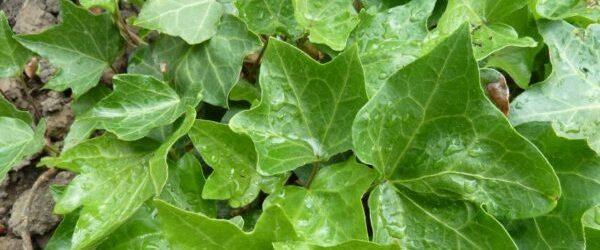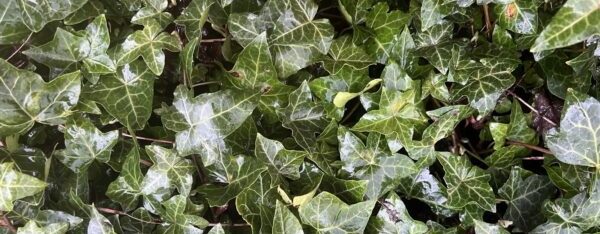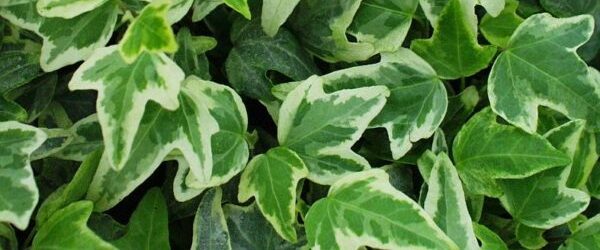
Ivy, a plant for the future
Table of contents
Who's right? Should ivy be uprooted or planted?
Ivy, from its botanical name Hedera, is a particularly divisive plant. Some people do their utmost to get rid of it, accusing it of all evils, while others praise it with force and conviction.
Yet the debate is simple. The former rely on often unfounded reputations, which we will examine as objectively as possible. As for the latter, they note that ivy ticks all the boxes of the plants in demand these days.
Complaints heard :
1 - Ivy is toxic : yes, its berries are toxic to humans and certain animals, although they were sometimes used boiled as food during the Second World War. But these same berries are appreciated by birds, particularly in late winter. Ivy is also regularly used as a medicinal plant, notably to treat coughs, respiratory disorders and certain skin diseases. As is often the case with certain substances, it's the dose that makes the poison.
1 - Ivy is invasive: this is partly true. Ivy left to its own devices can spread to the detriment of other plants, or climb onto the roof and slip under the tiles. But ivy is a plant that tolerates pruning perfectly. In fact, pruning is just about the only maintenance it requires, and once a year is usually more than enough. What's more, there are many varieties of ivy that remain compact and low-growing. With these, there's virtually no risk of overgrowth.
2 - Ivy damages walls: this is mostly false. First of all, ivy does not damage walls in good condition. On the contrary, it protects the wall from humidity, which preserves it. Similarly, an old stone wall will not be damaged by ivy. It's the removal of ivy that can actually cause stones to fall out. But if you leave it alone, the ivy will form a woody carapace that will consolidate the old wall. On the other hand, if the wall is cracked, ivy can penetrate the cracks in the wall and accentuate the phenomenon. So you can safely install ivy at the foot of a healthy wall.
3 - Ivy is a parasite: this is totally false. Without exception, every botanist will confirm this. Ivy uses spikes to attach itself, but these do not pump sap. What's more, at the foot of a tree, ivy roots don't compete with tree roots. On the contrary, ivy, whose dry leaves decompose on the spot, will provide humus for the trees and protect the soil. What's more, when ivy climbs trees, it does so vertically without strangling the tree, unlike other climbers. Ivy will usually stop well short of the canopy and will not deprive the tree of light. Only trees at the end of their life cycle can be completely covered by ivy. But it's not the ivy that causes the tree to end its life. So, in most cases, planting ivy at the foot of your trees is a useful gesture.
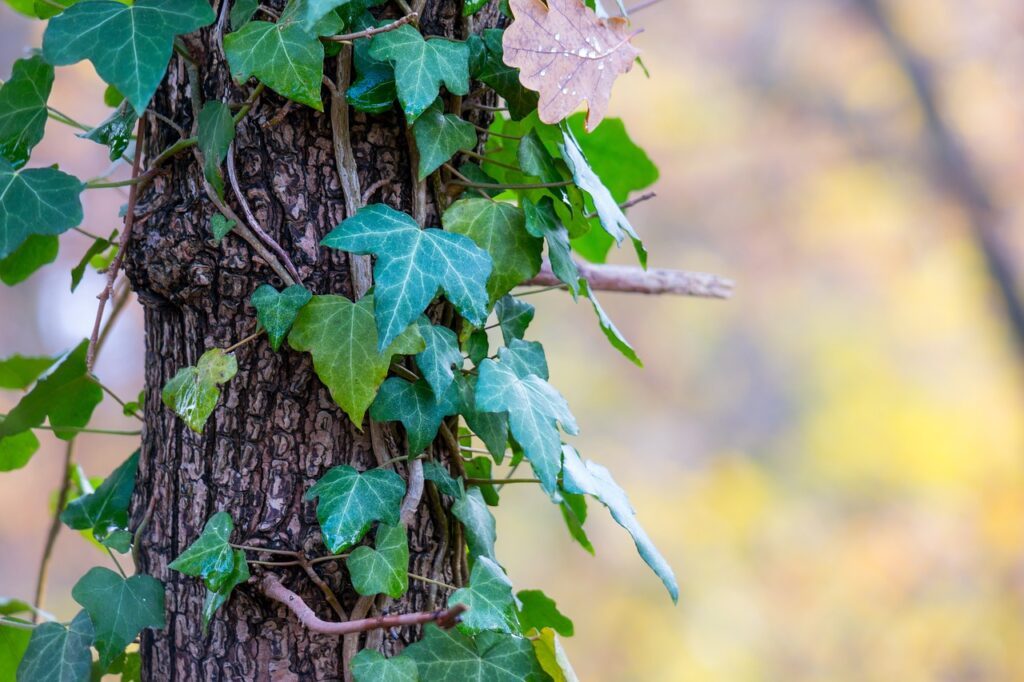
In search of the perfect plant.
Reassured about the supposed dangers of ivy, let's see if it can meet today's criteria in the search for the ideal plant. In today's circumstances, the plants most in demand are often those that :
- low-maintenance
- are beautiful all the time
- drought-resistant
- cold-resistant
- suitable for all types of terrain
- tolerate all exposures
- are good for the environment
- are useful for biodiversity
- ...
Let's get to know ivy
Ivy is a member of the Araliaceae family.
Curiously, of the more than forty botanical genera in this family, Hedera is the only representative in the European flora. All other members of this family are tropical or sub-tropical plants. Ivy is therefore the only member of the family in the temperate zone. In fact, it is thought to have appeared on earth towards the end of the secondary era. It is therefore a very old plant. At that time, the climate was much warmer than it is today. In those days, many plants flowered and produced fruit in winter, a more favorable season because it was more temperate and wetter. Since then, many major climatic changes have occurred, and many of the plants and animals of the time have disappeared. Only those able to adapt have survived. Ivy is one of them, a testament to its resilience. It has retained its seasonality, flowering and fruiting from October to March.
Ivy can live for a very long time, certainly more than 400 years. Some would even say up to 1000 years. When you plant ivy, it's like planting a tree!
It can grow to considerable dimensions. Ivy can grow to over 30 meters in height. Its stems lignify over time and can reach a diameter of almost 40 cm.
The 3 ages of ivy
Ivy goes through 3 successive stages. First, it crawls and spreads out. Its stems emit adventitious roots that penetrate the soil and reinforce it. It will continue to crawl until it finds a support for climbing. It then begins its second stage. Instead of adventitious roots, spikes appear, which don't serve to feed it, but to hold it firmly to its support - a tree, a wall, a post, etc. Its objective now is to seek more light. When it reaches a sufficient height and has enough light, it enters its third stage, the adult stage. Up to now, in the previous two stages, ivy was in its juvenile stage. From the adult stage, ivy seeks to reproduce. To do this, it begins to flower and bear fruit.
These three stages are wonderfully recounted by La Hulotte magazine in issues 106 and 107, which are still available.
Here's a short extract to whet your appetite.

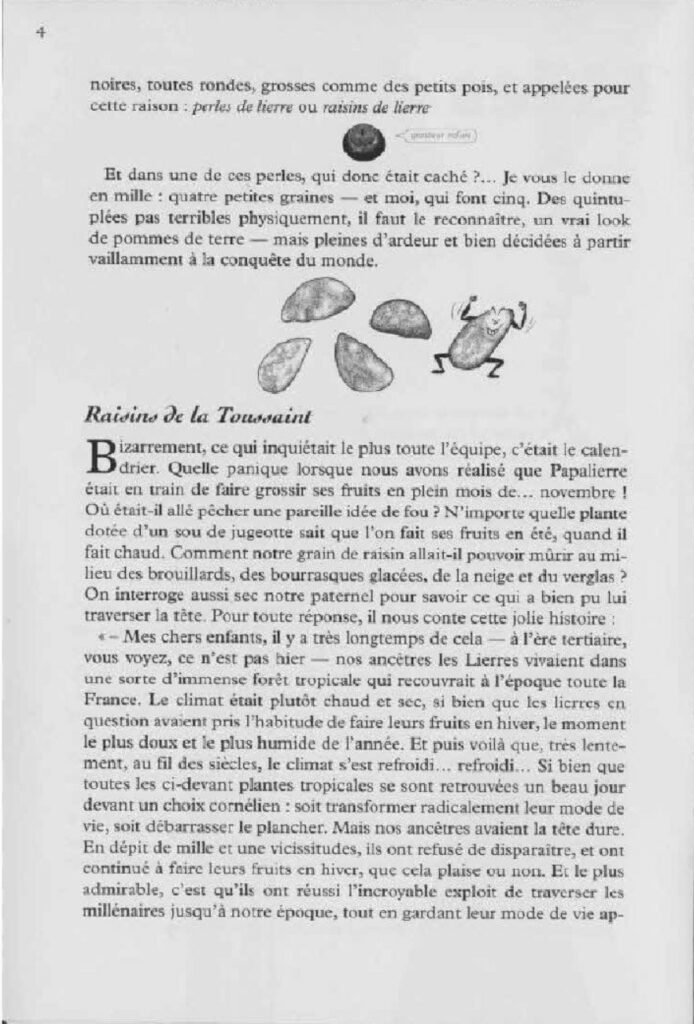
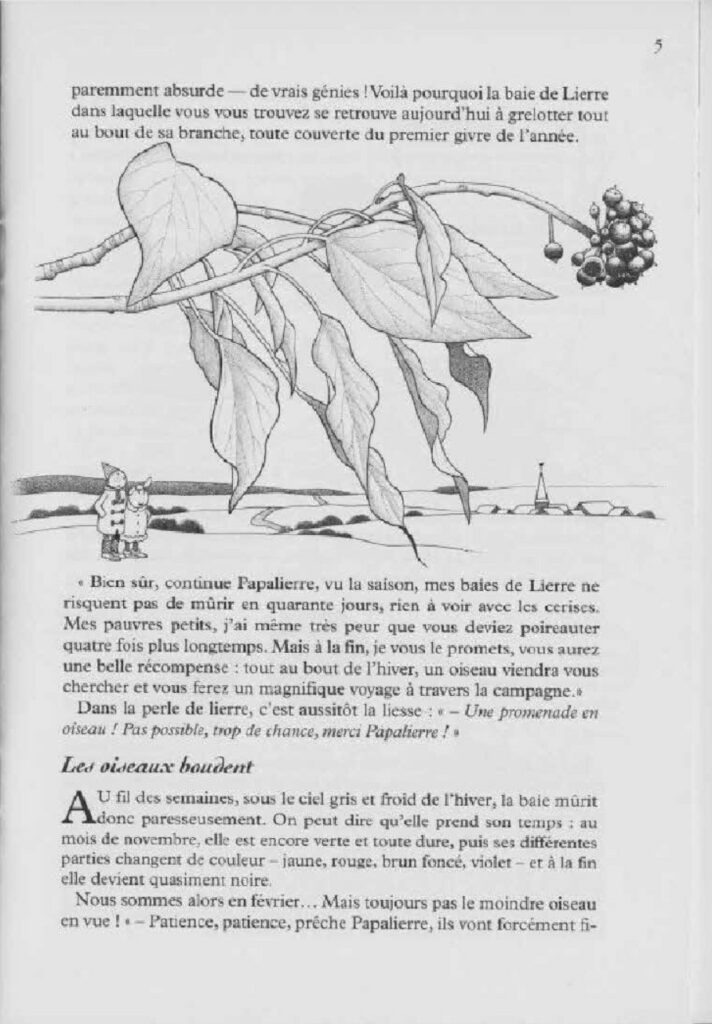
Its leaves
Ivy leaves are evergreen, with 3, 5 or 7 lobes when young. Although they are called "evergreen", they are not eternal. They can live from 3 to 5 years. They are regularly replaced by new leaves, giving ivy its evergreen appearance throughout the 4 seasons. These leaves are criss-crossed by clearly visible veins.
When ivy reaches adulthood, the stems begin to form branches that spread away from the support. Mature leaves are no longer lobed, but whole, often elliptical or oval. The veins now fade.
So, on the same ivy plant that has reached the adult stage, you'll find two leaf forms: juvenile leaves on the lower parts and adult leaves on the shrubby parts. There are often even intermediate forms. Botanists call this change in vegetative form dimorphism.
An example of a juvenile leaf
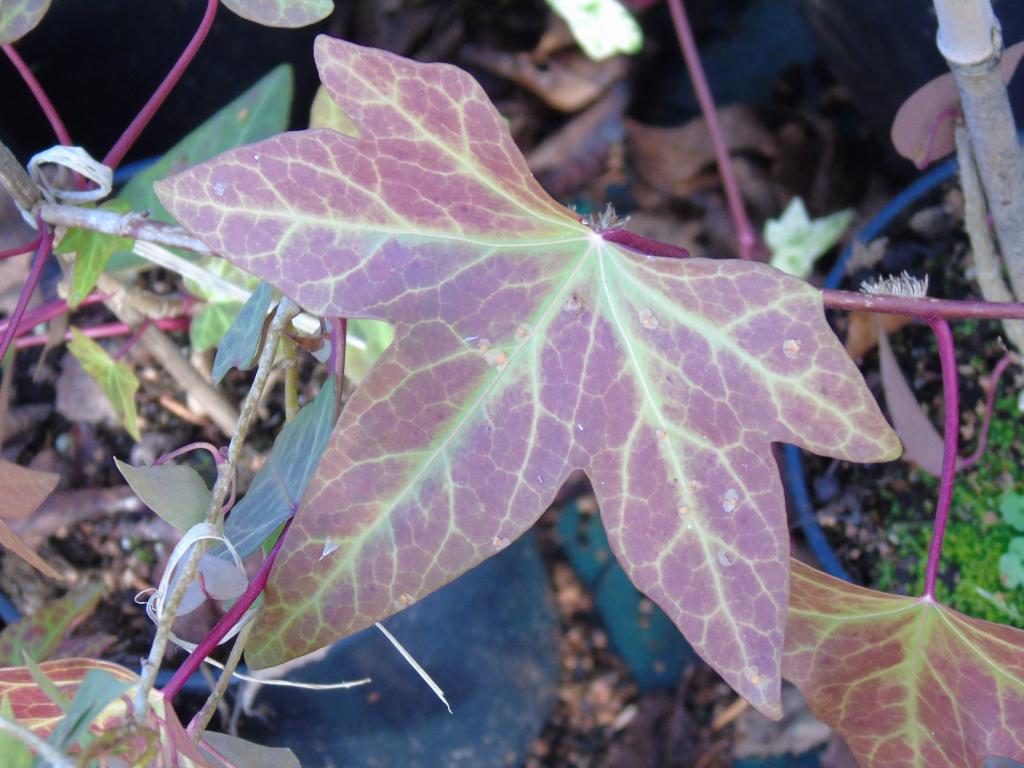
An example of an adult leaf
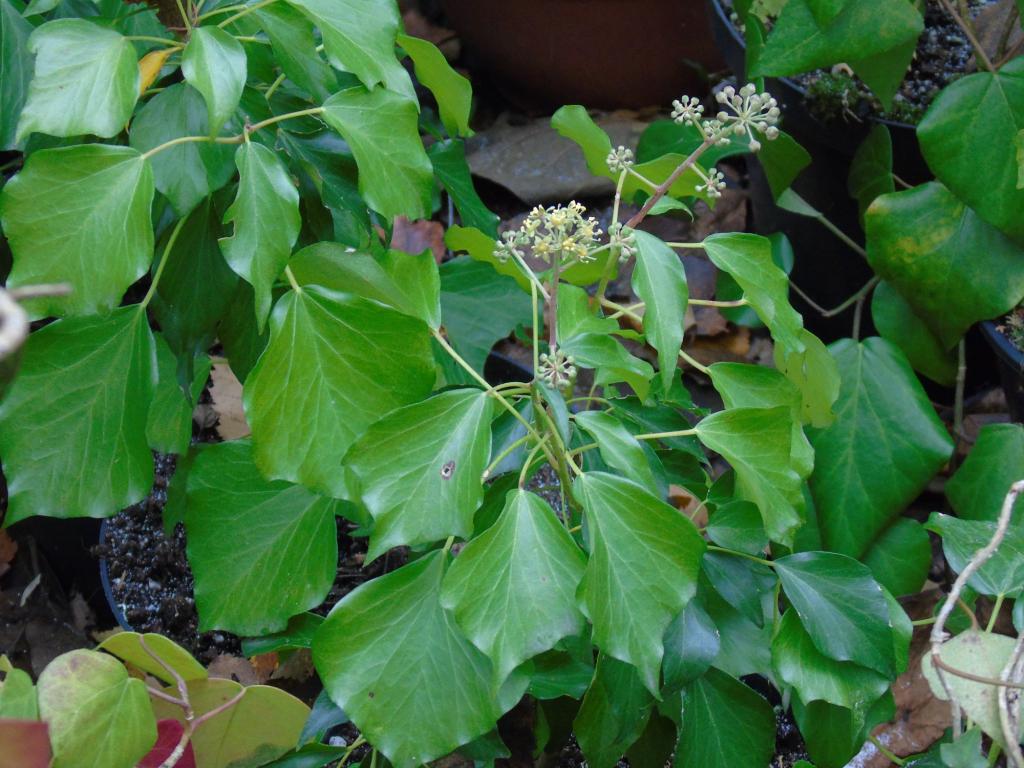
Flowers, fruits, seeds
Only when it has reached the adult stage does ivy begin to produce flowers. These take the form of spherical, greenish-yellow umbels. The flowers themselves are tiny, consisting of 5 sepals, 5 petals and 5 stamens. Flowering generally takes place from September to November.
Fruits are berries that gradually turn from green to black or yellow, depending on the species. They only reach maturity around March. They contain 1 to 5 kidney-shaped seeds.
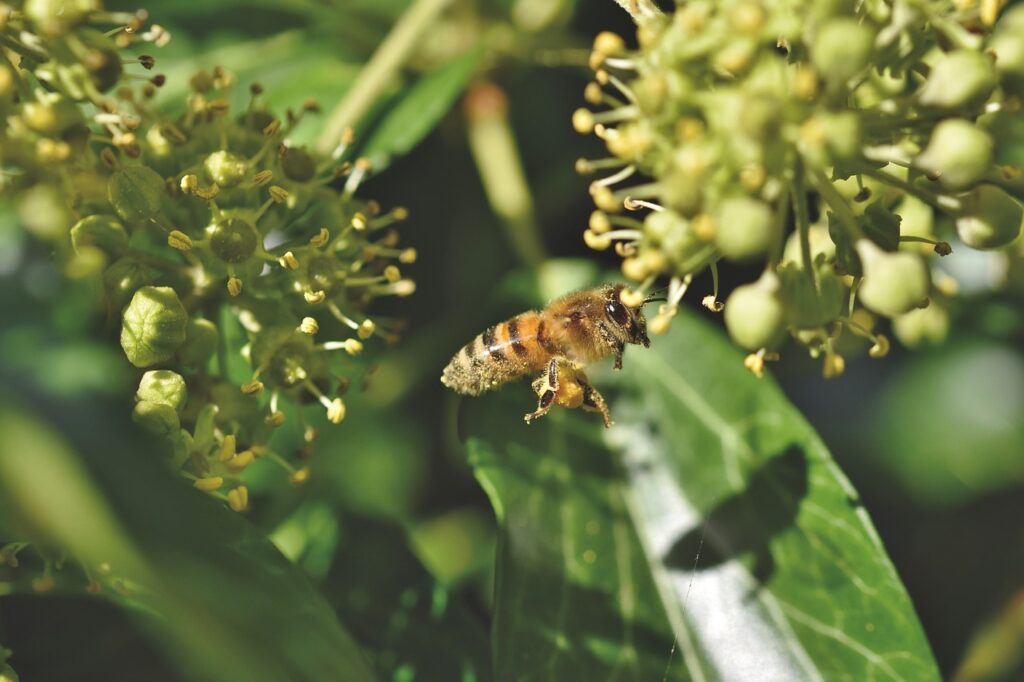
Ivy hairs
They are barely visible and of no aesthetic interest. But the reason we mention them is that they are of the utmost importance in identifying species. In fact, they are one of the major criteria for differentiation, when other aspects are insufficient to decide on the species. These hairs are found on young shoots and leaf petioles. They are also found on the leaves themselves, particularly on the underside, around the vein. These hairs measure around 0.05 mm. The hairs usually disappear on mature leaves.
Without going into detail, there are two types: stellate hairs, i.e. star-shaped hairs, and scaly hairs, i.e. hairs in the form of juxtaposed scales. It's the shape and number of branches that differentiates the species.
The great diversity of ivy
Botanical species
The Hedera genus is made up of some fifteen species, each with its own geographical area of preference, although there are overlaps on the edges:
- Algerian ivy, Hedera algeriensis Hibberd, mainly in Algeria.
- Azores ivy, Hedera azorica Carrière, endemic to the Azores.
- Canary ivy, Hedera canariensis Willdenow, native to the Canary Islands.
- Colchis ivy, Hedera colchica K. Koch, from the Caucasus region and western Asia.
- Cyprus ivy, Hedera cypria Mc Allister, endemic to Cyprus.
- English ivy, or wood ivy, or common ivy, Hedera helix Linné, which comes from a wide area covering almost all of Europe and western Asia.
- Poet's ivy, Hedera helix f. poetarum, a subspecies of English ivy, mainly native to the Caucasus.
- Irish ivy, Hedera hibernica Bean, Ireland and Atlantic coasts of Europe.
- Spanish ivy, Hedera iberica Ackerfield et J. Wen, Spain and Portugal.
- Madeira ivy, Hedera maderensis K. Koch, Madeira archipelago.
- Moroccan ivy, Hedera maroccana Mc Allister, native to Morocco.
- Nepal ivy, Hedera nepalensis var. nepalensis K. Koch , Nepal, western Asia, India and Indochina.
- Chinese ivy, Hedera nepalensis var. sinensis Rehder, China, Indochina and India.
- Iran ivy, Hedera pastuchovii G. Woronow, Iran, Caucasus and western Asia.
- Japanese ivy, Hedera rhombea Bean, Japan, eastern Asia.
Each of these species will be described in greater detail on the relevant page of this site.
Hybrid species
Four natural hybrids are usually cited. These are :
- Hedera x cazoriensisa hybrid of Hedera helix and Hedera maroccana, spotted in southern Spain by Mc Allister.
- Hedera x nessensisa hybrid of Hedera iberica and Hedera hibernica, found by the same Mc Allister in Monchique, Portugal.
- Hedera x sepulcralishybrid of Hedera hibernica and Hedera algeriensis, found in a collection near Monterey, California.
- Hedera x soroksariensishybrid of Hedera helix and Hedera hibernica, found in a coastal forest in Washington state.
We should also mention an intergeneric hybrid (between two different botanical genera): x Fatshedera lizeia hybrid between Fatsia japonica 'Moseri' and Hedera hibernica. This hybrid itself comes in several cultivars.
Cultivars
There are a great many cultivars, mainly of Hedera helix, but not exclusively. It's difficult to give an exact number, as new ones are constantly being created, some may have disappeared, others are duplicates under different names. But there are certainly more than 500, and probably closer to a thousand.
They come with variegated yellow, cream and white leaves. There are also plants with deeply dissected leaves, curly leaves or wavy leaves. Some are very compact, while others are very voluble. Some prefer the sun, while others are happier in the shade. Some prefer to crawl, while others love to climb. Some will change foliage color with the seasons. In short, there is a huge diversity of ivy. This site is proof of that.
Multiple uses for ivy
A beautiful plant all year round
One of the great advantages of ivy is its decorative evergreen foliage. With ivy, you can be sure of having a plant that will remain beautiful throughout the 4 seasons. This doesn't mean that the landscape will remain identical and monotonous. After all, many varieties offer us changing colors throughout the seasons.
Hedera colchica 'My Heart', for example, takes on blood-red hues in cold weather. Or Hedera helix 'Baccifer' develops golden-hued young shoots in spring. These are just a few of many examples.
An outstanding ground cover
Everyone knows the ground-cover qualities of ivy and has often seen it demonstrated. This ground cover can be thicker or thinner and denser, depending on the variety. With the densest varieties, weeds have no chance of proliferating. What's more, the usefulness of ground cover in protecting our soils is well established. Soil cover limits erosion and leaching. What's more, the renewal of ivy leaves over the years provides good-quality humus that benefits neighboring trees.
A lawn substitute
In shady areas, and even more so under trees, it's very difficult, if not impossible, to install and maintain a beautiful lawn. Ivy is the ideal answer for these situations. Even dense shade doesn't scare it, and neither do tree roots. What's more, it's much easier to maintain than a lawn, with no need for regular mowing or watering. Once established, ivy will take care of itself. A simple pruning once a year will suffice to limit it to its own area.
To dress up a facade or hide an unsightly wall
With its spikes, ivy will enjoy climbing up a wall and covering it completely. Facades covered with ivy can be very attractive. However, periodic pruning is required to limit its height and prevent it from climbing onto the roof, as well as to clear openings. As for unsightly walls, ivy is surely the most effective solution, with, of course, a little patience until the ivy covers the whole. In the latter case, however, pruning may need to be more frequent.
To dress up an arch or pergola
Another use for the climbing talents of ivy. To structure the space in a garden, plant gates or arches are often the most beautiful effect. Standard commercial structures are practical, but not always aesthetically pleasing. On the other hand, they can be used as a support for ivy cladding. Place an ivy plant on each side of the arch and let them meet at the top. To keep the arch looking its best, plan to prune it regularly. In the same way, you can install ivy plants at the foot of each post of a pergola. As well as looking good, you'll also benefit from the shading effect once the ivy has developed sufficiently.
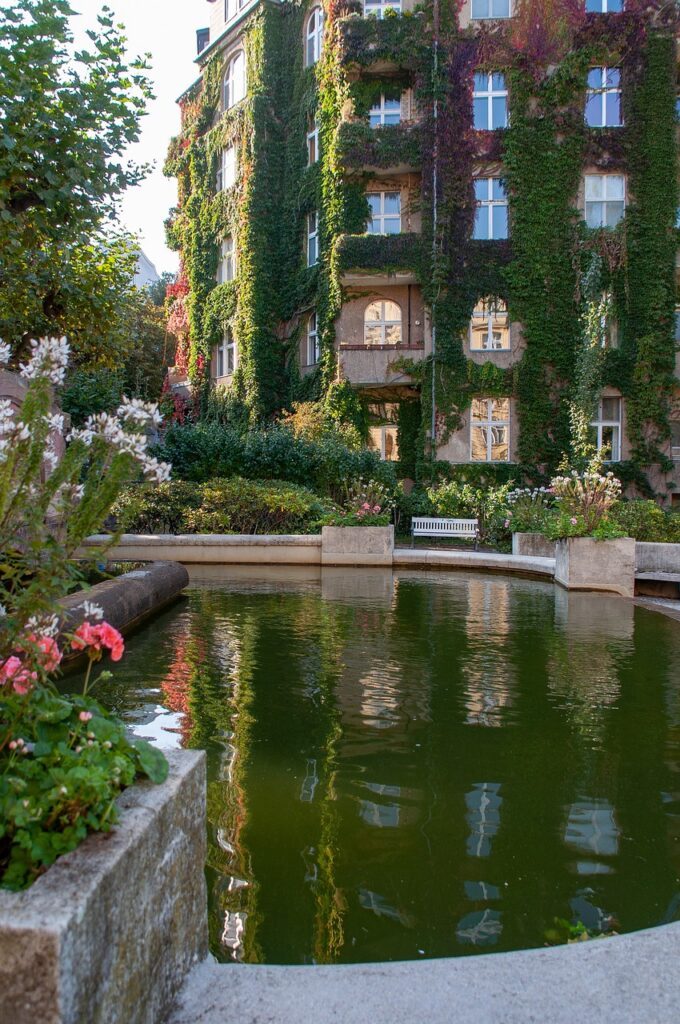
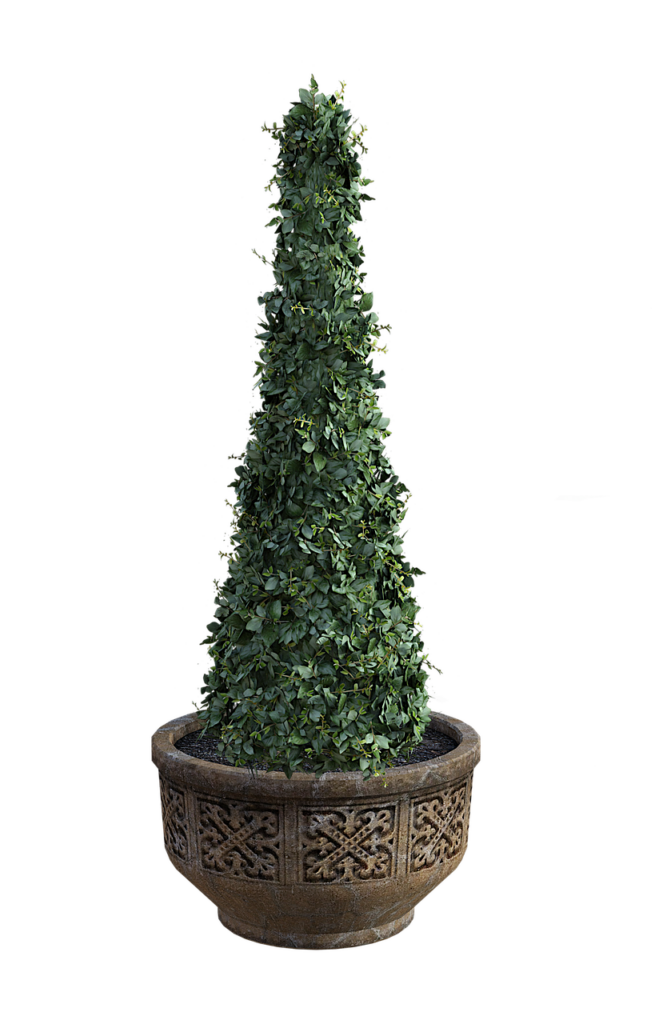
Ivy in topiary
Ivy can itself be worked as a work of art, in the style of topiary, in the same way as boxwood. Choose varieties with fairly small leaves and dense foliage. A wire-mesh structure is a perfect support. It will soon be completely covered if you choose a fast-growing ivy. Note that this type of topiary, unlike boxwood, is not subject to attack by pests, such as codling moth, or fungi.
The more frequently you prune, the more your topiary will retain its desired shape and the denser the ivy will grow.
To highlight an object
To showcase an object, statue or sculpture, it's sometimes necessary to create a backdrop that makes the work stand out. Ivy lends itself well to this kind of exercise. Choose your shade accordingly. Dark green foliage will make light objects stand out. Conversely, ivy foliage in bright tones will enhance darker objects.
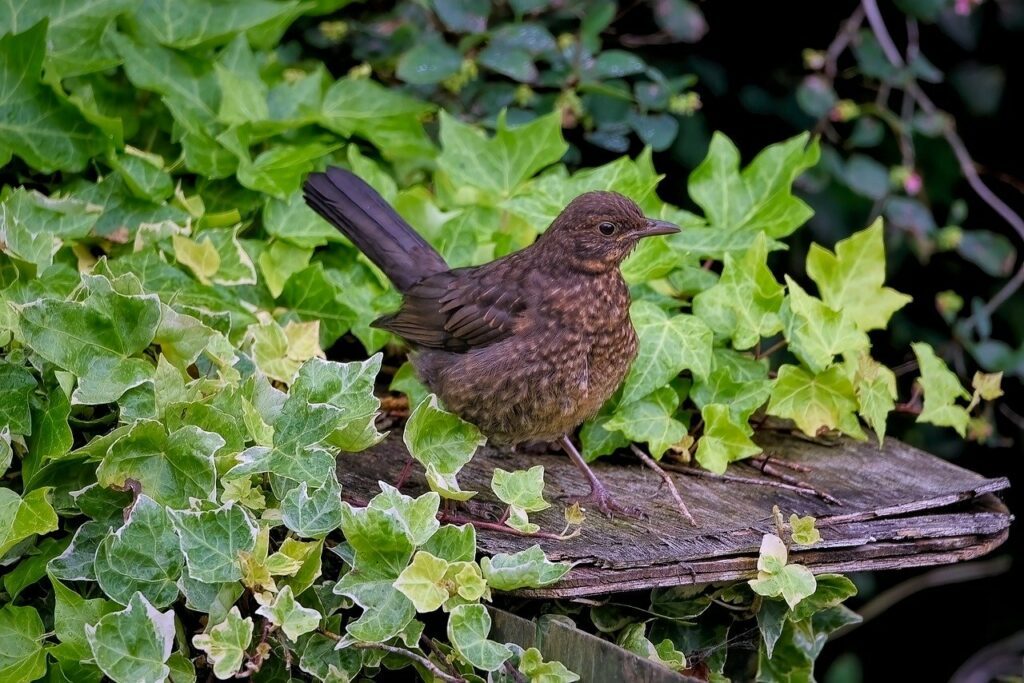
Ivy, the house plant
Ivies have long been used as houseplants. Their ability to thrive in shady or low-light areas makes them particularly suited to our interiors. You can grow them in pots or window boxes. If you want to climb them, they'll need a support. But you can also let them cascade: ivy lends itself particularly well to this. With ivy, you can create an easy-care indoor plant jungle. Choose varieties with particularly decorative foliage.Gloire de Marengo' ivy is one of the most successful. But if you're looking for more originality, take advantage of the wide choice on this site.
To protect tree trunks
Landscapers and local authorities are beginning to plant ivy at the foot of trees to protect their trunks. By covering tree trunks, ivy provides a protective sheath that is beneficial in several ways. It insulates them from the scorching cold and scorching sun to which young trees can be susceptible. In addition, trees whose trunks are surrounded by ivy will not be browsed by animals. As we've already said, ivy is not a parasite. It doesn't grow to the detriment of trees, quite the contrary, and can be a ground cover appreciated by tree roots.
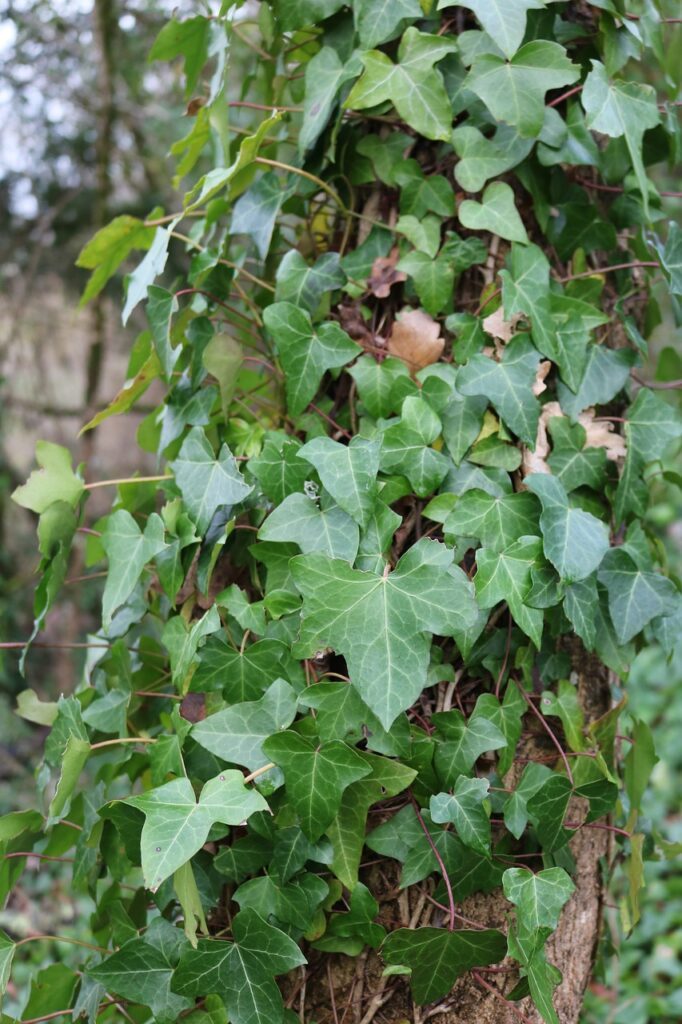
To dress a dead tree
Dead trees are of great ecological interest. But they are not always aesthetically pleasing in the landscape. One solution is to plant several ivy plants at the foot of the dead tree. Over time, the tree will regain its green appearance. Be aware, however, that with this ivy covering, your dead tree will be more susceptible to the wind.
To create a plant screen
There are a host of solutions and materials available to isolate you from an unpleasant face-to-face presence, to conceal an unsightly perspective or simply to create a more intimate corner. Not all of them are durable or tasteful. Have you thought about ivy? To create a plant screen with ivy, all you have to do is provide it with a mesh on which it can settle. There are a number of fast-growing varieties of ivy that can provide a permanent, eye-catching screen. Ivy lends itself particularly well to pruning, even severe pruning if necessary. You can therefore shape your plant screen as you wish.
To regulate temperatures
Covering walls with ivy is not just for aesthetic reasons. In fact, ivy can be used to insulate and save a few degrees in temperature. It works both ways. It keeps the home cooler in summer, reducing air-conditioning costs. And it protects against the cold in winter, reducing heating costs. Studies on this subject on several public buildings in Great Britain have shown an average reduction in air-conditioning costs of 25%. Another study in China produced similar results (28% reduction). It should be added that ivy, like all vegetation, reduces outside temperatures, particularly in cities, and helps to purify the air. What's more, managing an ivy-covered wall is much simpler and less costly than plant walls. Urban architects could be inspired.
To promote biodiversity
Ivy, whether on the ground or on a vertical support, is a wonderful shelter for many insects and/or birds. Ivy provides them with shelter and food. Ecologists are well aware of this, and recommend the installation of ivy to encourage biodiversity. As it blooms at the wrong time to other plants, it provides nectar that is particularly appreciated by foragers at the end of the season. Just stand next to a flowering ivy plant on a sunny day and you'll hear the intense buzzing of this highly diversified army of foragers.
Feeding birds in winter
As mentioned above, ivy berries begin to ripen in late winter (February-March). This is a time when food for birds is scarce. These berries are therefore highly prized at this time of year. Ivy berries are not toxic to birds, which enjoy them when ripe. Birds then disperse the seeds in their droppings.
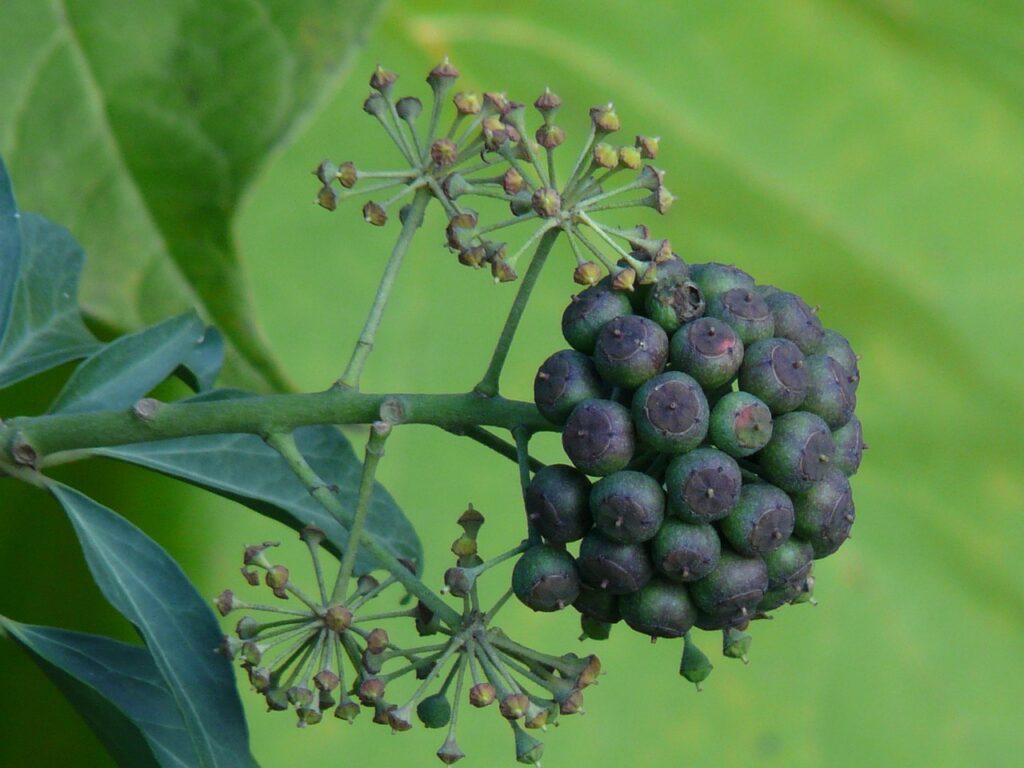
And many more ...
These are just a few examples of what you can do with ivy, and its aesthetic, environmental and ecological benefits. So, without hesitation, plant ivy, plant ivy! It's undoubtedly a plant of the future.
